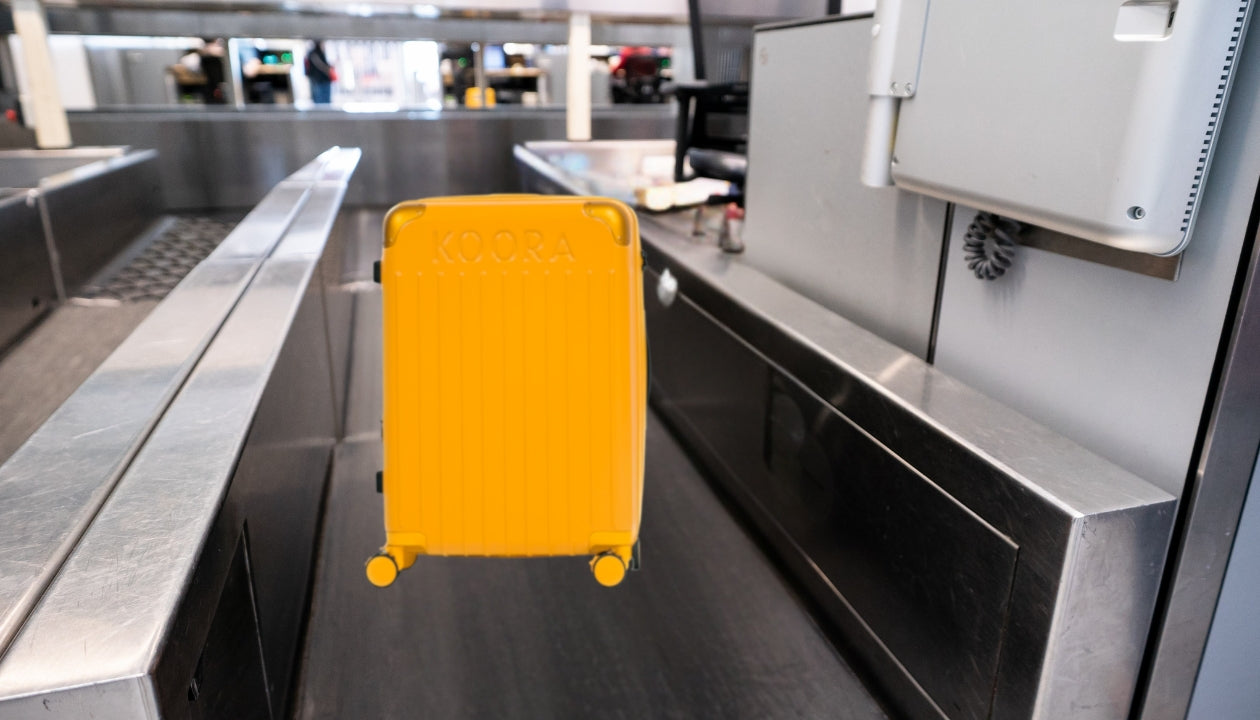
How Early Should You Check in Your Luggage at the Airport?
Your flight is booked, and your luggage is packed before your departure. However, even veteran traveler feel uncertain when they must decide exactly when to arrive for baggage check-in at the airport.

Arriving too soon means spending many hours waiting at the check-in desk. Both too early and too late arrival can have negative consequences, such as bag loss or flight no-show. Your vacation safety, money, and stress levels depend entirely on achieving the right check-in timing.
This post provides flight timing guidelines regarding airline rules and travel modes with airport classifications that help travelers avoid stressful situations when they need to drop off their bags.
The Golden Rule: 2 to 3 Hours Before Departure
According to common recommendations, most commercial passengers should check in at least two to three hours before their flight departure time.
-
Domestic flights: Arrive at least 2 hours before departure
-
International flights: Arrive at least 3 hours before departure
This rule requires more effort than just appearance. The standard timeframe includes all airport activities starting from checking in and dropping off bags, then security clearance, and leading to reaching your gate.
When Does Airline Check-in & Bag Drop Open?
Every airline has specific policies related to when you can check in and drop off your luggage. Here's a typical range:
-
-
Bag drop opens: 3 to 4 hours before departure
-
Bag drop closes: 45 minutes to 1 hour before departure (domestic) , and 1–2 hours before departure (international)
-
Example:
Qantas
-
Domestic Flights: Check-in closes 30 minutes before departure.
-
International Flights: Check-in closes 90 minutes before departure.
Virgin Australia
-
Domestic Flights: Check-in closes 30 minutes before departure.
-
International Flights: Check-in closes 60 minutes before departure.
Always check your airline's policy on their website or mobile app before your trip. These cut-off times are strict.
Airport Size & Congestion Matter
The check-in time depends on which airport your flight starts from because large airports disperse their processes across multiple terminals.
At Major Airports:
Expect longer queues at check-in and security
-
Plan to arrive 2.5 to 3 hours early, even for domestic flights
At Small Regional Airports:
-
Less traffic and shorter lines
-
1.5 to 2 hours before may be sufficient for domestic flights
Use Google Maps or airport apps to estimate traffic and walking times inside the terminal.
Domestic vs. International Flights: What's the Difference?
Domestic Flights
-
Less documentation required
-
No immigration process
-
Shorter security queues
Arrival suggestion: 1.5 to 2 hours before flight
International Flights
-
Passport check, immigration, customs
-
Possible document checks (visas, vaccinations, etc.)
-
Extra scrutiny on luggage (sometimes)
Arrival suggestion: 3 hours before departure, minimum
Checked in Online to Save Time
Most airlines allow online check-in 24 to 48 hours before your flight. This helps you:
-
Skip long queues
-
Choose your seat
-
Print or download your boarding pass
Even if you check in online, you’ll still need to drop off your checked baggage at the counter, so early arrival still applies.
Some airlines have self-service kiosks and bag-drop stations that are much faster than the main counter.
Best Time to Arrive Based on Flight Timing
Early morning flights (5 AM–8 AM):
-
-
Arrive earlier than usual (airports are busy with business travelers)
-
Bag drop may open later, so check in online
-
Afternoon flights (12 PM – 4 PM):
-
Moderate congestion; standard 2–3 hour rule applies
Late-night flights (9 PM onwards):
-
-
Expect longer check-in lines for multiple international flights departing together
-
Arrive 3 to 3.5 hours early
-
What Slows You Down? Plan for These Delays
Even if you’re early, certain factors can cause delays:
-
Long baggage drop lines (especially during holiday seasons)
-
Unusual baggage or excess weight
-
Immigration and customs checks
-
Security lines (especially at peak times)
-
Terminal changes or a large airport layout
-
Additional COVID-19 health checks (in some regions)
Avoid cutting it close, especially if traveling with kids, seniors, or bulky luggage.
Flying with Checked Bags vs. Carry-On Only
If you're flying with carry-on only, you can often:
-
Arrive 1–1.5 hours before (domestic)
-
Skip the check-in counter completely
-
Head straight to security and the boarding gate
But if you’re checking in luggage, always allow buffer time:
-
-
You must check your bags before the airline's cut-off time
-
Late check-in may lead to bags not making the flight, even if you do
-
Real-Life Scenarios
Scenario 1: You Arrive 90 Minutes Before an International Flight
-
-
Your airline requires check-in 2 hours before departure
-
Security and immigration lines are long
-
You risk being denied boarding, even if you run to the gate
-
Scenario 2: You Arrive 3 Hours Before a Domestic Flight
-
You check in, drop your bags, and breeze through security
-
You have extra time to relax, eat, or charge your devices
-
Peace of mind = worth it
What Happens If You’re Late?
If you miss the baggage check-in cut-off:
-
Your luggage won’t be accepted
-
You may need to rebook your flight
-
In the worst case, your entire ticket is forfeited
In case of emergencies or delays (traffic, accidents), call the airline as soon as possible. They may assist or reschedule.
Final Thoughts: Better Be Early Than Sorry
When it comes to airport timing, especially for checking in luggage, the best rule is to avoid taking chances.
With a little preparation and timing, you can say goodbye to the anxiety of missed flights and lost luggage—and hello to smooth, stress-free travel.



Leave a comment
This site is protected by hCaptcha and the hCaptcha Privacy Policy and Terms of Service apply.